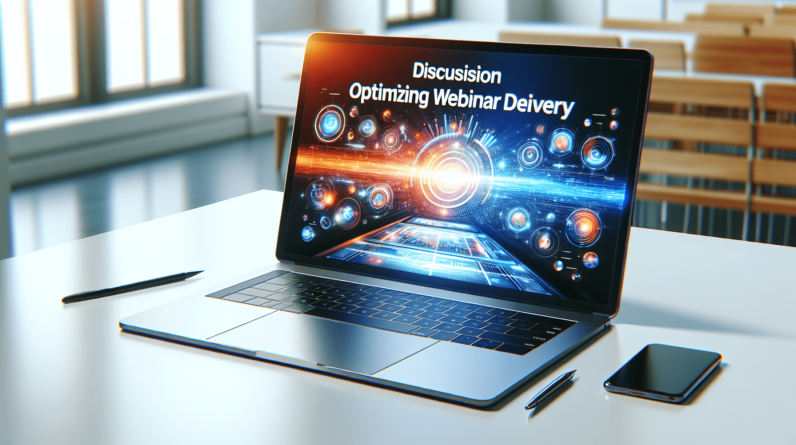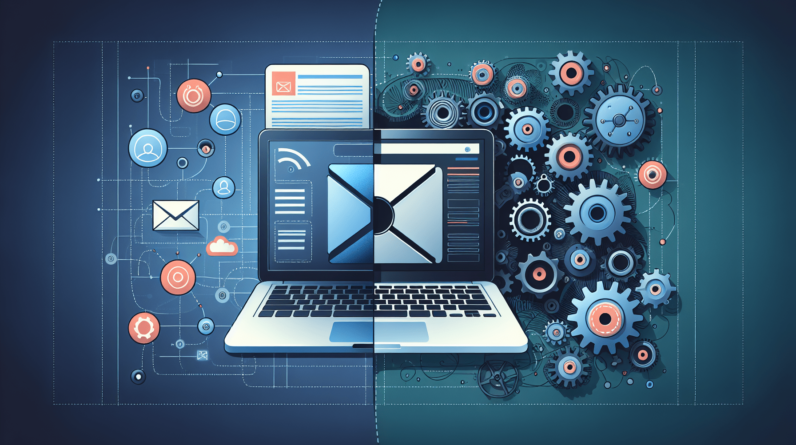
If you’re looking for a powerful tool to amp up your sales game, look no further than GoHighLevel Sales Funnels. This all-in-one platform is a game-changer for businesses wanting to maximize their sales potential. With its user-friendly interface and robust features, GoHighLevel enables you to create effective sales funnels that capture leads, nurture prospects, and convert them into loyal customers. Say goodbye to manual processes and hello to a streamlined sales journey that will turbocharge your revenue.
What is GoHighLevel?
Overview of GoHighLevel
GoHighLevel is a powerful all-in-one sales and marketing platform designed to help businesses streamline their sales processes and drive more conversions. It offers a comprehensive suite of tools and features that enable users to create and manage sales funnels, automate follow-ups, integrate with other tools, and analyze performance, all within a single, user-friendly interface.
Features and Benefits
GoHighLevel offers a range of features and benefits that make it an ideal choice for businesses looking to optimize their sales funnels. Firstly, it provides a drag-and-drop funnel builder that allows users to easily create and customize their sales funnels. This eliminates the need for complex coding or design skills, making it accessible to users of all technical levels.
Additionally, GoHighLevel offers seamless integration with other tools such as CRM systems, email marketing software, and payment gateways. This integration ensures a smooth flow of data and allows for effective customer management throughout the sales process.
Furthermore, GoHighLevel provides automation features that can significantly enhance productivity and efficiency. These features enable users to set up triggers and actions based on customer behavior, automate follow-ups, and personalize customer interactions. By automating repetitive tasks, businesses can focus on nurturing leads and closing sales.
Another major advantage of using GoHighLevel is its analytics and reporting capabilities. The platform provides insights into the performance of sales funnels, allowing users to identify areas for improvement and make data-driven decisions. This data can help businesses optimize their sales processes and drive more conversions.
Overall, GoHighLevel offers a comprehensive range of features and benefits that can turbocharge sales and help businesses achieve their revenue goals.
Understanding Sales Funnels
Definition and Purpose of Sales Funnels
A sales funnel is a systematic process that guides potential customers through different stages of the buyer’s journey, ultimately leading them to make a purchase. It is designed to capture leads, nurture them, and convert them into paying customers.
The purpose of a sales funnel is to streamline the sales process and guide customers along a predefined path. By providing valuable content and personalized experiences at each stage, businesses can build trust and establish a relationship with their prospects. This increases the likelihood of conversions and maximizes the effectiveness of marketing efforts.
Components of a Sales Funnel
A typical sales funnel consists of several stages that align with the buyer’s journey. These stages include:
-
Awareness: At this stage, potential customers become aware of a business or a solution to their problem. The goal is to attract their attention and spark their interest.
-
Interest: Once prospects are aware of a business, they move into the interest stage. Here, they seek more information and actively engage with the provided content.
-
Consideration: In the consideration stage, potential customers evaluate different options and compare products or services. Businesses need to showcase their unique value proposition and address any objections or concerns.
-
Decision: At this stage, prospects make a decision and become customers. They are ready to make a purchase and need the final push or incentive to convert.
-
Retention: The sales funnel doesn’t end with a single purchase. Businesses need to focus on retaining customers and building long-term relationships to increase customer lifetime value.
Each stage of the sales funnel requires specific strategies and tactics to effectively lead potential customers towards a purchase.
The Power of GoHighLevel Sales Funnels
Why GoHighLevel is Ideal for Sales Funnels
GoHighLevel is specifically designed to optimize the sales funnel process. Its intuitive interface and extensive features make it a powerful tool for businesses to build, manage, and optimize their sales funnels.
One of the key advantages of GoHighLevel is its ease of use. With its drag-and-drop funnel builder, even users with no technical skills can create professional-looking and high-converting sales funnels. This empowers businesses to take control of their marketing efforts and save costs on outsourcing design and development.
GoHighLevel also offers seamless integration with other tools, such as CRM systems. This integration ensures that customer data is synced across platforms, enabling businesses to provide a personalized experience throughout the sales funnel. By centralizing customer data, businesses can easily track customer interactions, analyze behavior, and make data-driven decisions.
Another powerful feature of GoHighLevel is its automation capabilities. It allows users to set up triggers and actions based on customer behavior, such as sending follow-up emails, triggering SMS notifications, or assigning tasks to sales representatives. Automation not only saves time but also ensures that no leads fall through the cracks, increasing the chances of conversion.
Advantages of Using GoHighLevel for Sales Funnels
There are several key advantages to using GoHighLevel for sales funnels. Firstly, its all-in-one nature eliminates the need for multiple tools and platforms, streamlining the entire process and reducing costs.
Secondly, GoHighLevel’s intuitive interface makes it easy for users to navigate and manage their sales funnels. This ensures that businesses can focus on their core activities, such as lead generation and nurturing, rather than getting bogged down in technical complexities.
Additionally, GoHighLevel provides detailed analytics and reporting, allowing businesses to measure the performance of their sales funnels. It provides insights into important metrics such as conversion rates, customer behavior, and lead sources. By identifying strengths and weaknesses, businesses can optimize their sales funnels and drive more conversions.
Furthermore, GoHighLevel offers excellent customer support and training resources. They provide tutorials, webinars, and a dedicated support team to assist users in leveraging the full potential of the platform. This support ensures that businesses can make the most of their sales funnels and overcome any challenges they may face.
Overall, GoHighLevel offers a comprehensive solution for businesses looking to optimize their sales funnels. Its ease of use, integration capabilities, automation features, and analytics make it an ideal tool for businesses of all sizes and industries.
Setting Up Your Sales Funnel in GoHighLevel
Creating an Account on GoHighLevel
To get started with GoHighLevel, you first need to create an account. Simply go to the GoHighLevel website and click on the “Get Started” button. You will be prompted to enter your email address and create a password. Once you have completed the registration process, you can access your GoHighLevel account.
Navigating the GoHighLevel Interface
Upon logging into your GoHighLevel account, you will be presented with a user-friendly interface. The interface is designed to make it easy for users to navigate and access the various features and tools.
The main dashboard provides an overview of your sales funnels, tasks, and recent activities. From here, you can quickly access and manage your sales funnels and track their performance.
The left-hand sidebar contains the main navigation menu, which allows you to switch between different sections of the platform, such as sales funnels, contacts, campaigns, and more. By clicking on the corresponding tabs, you can access the specific features and settings related to each section.
Configuring Your Sales Funnel Settings
Before creating your sales funnel, it’s important to configure your settings to align with your business goals and objectives. In the settings section, you can customize various aspects of your sales funnel, such as branding, lead routing, and notification preferences.
By defining your branding settings, you can ensure that your sales funnel reflects your brand identity. This includes uploading your logo, choosing color schemes, and customizing the layout.
Lead routing settings allow you to define how leads are assigned to specific team members or departments. You can set up rules based on criteria such as lead source, location, or any other relevant attribute.
Notification preferences enable you to receive real-time updates on lead activities, such as form submissions or email opens. By configuring your notifications, you can stay informed and take prompt action when necessary.
By configuring your sales funnel settings, you can optimize the user experience, automate lead management, and ensure effective communication within your team.
Designing Your Sales Funnel
Understanding the Different Funnel Stages
When designing your sales funnel in GoHighLevel, it’s important to understand the different stages that customers go through before making a purchase. These stages align with the components of a sales funnel discussed earlier.
Each stage requires specific strategies and tactics to effectively move customers through the funnel. By understanding these stages, you can create targeted content and messages that resonate with your prospects and guide them towards conversion.
Choosing the Right Template for Your Sales Funnel
GoHighLevel provides a range of professionally designed templates for different types of sales funnels. These templates are customizable and can be tailored to match your brand and specific requirements.
When choosing a template, consider the nature of your product or service and the goals of your sales funnel. For example, if you are offering a free trial, you may want to use a template that focuses on capturing leads and showcasing the value of your product. On the other hand, if you are selling a high-ticket item, you may prefer a template that emphasizes trust-building and personalized interactions.
Customizing Your Sales Funnel Design
Once you have selected a template, you can customize the design to align with your branding and preferences. GoHighLevel’s drag-and-drop editor allows you to easily change elements such as images, text, colors, and layouts.
Customization options are extensive, allowing you to create a unique and visually appealing sales funnel. Make sure to keep your target audience in mind and design your sales funnel in a way that resonates with them and aligns with your overall brand messaging.
Remember, the design of your sales funnel plays a crucial role in capturing attention, building trust, and driving conversions. Take the time to create a visually appealing and user-friendly experience that guides your prospects towards making a purchase.
Mapping Out Your Sales Funnel Steps
Identifying the Stages of Your Sales Process
Mapping out your sales funnel steps involves identifying the specific stages that your customers go through during the sales process. This requires a deep understanding of your target audience, their pain points, and their motivations.
Start by defining the stages based on the components of a sales funnel discussed earlier: awareness, interest, consideration, decision, and retention. Consider the actions and mindset of your prospects at each stage and outline the specific steps they need to take to progress through the funnel.
Defining the Actions and Goals for Each Stage
For each stage of your sales funnel, define the actions and goals that you want your prospects to complete. These actions can include signing up for a newsletter, requesting a demo, or making a purchase. By setting clear goals, you can track the progress of your prospects and optimize your sales funnel accordingly.
Additionally, consider the content and resources that you can provide at each stage to facilitate the customer’s journey. This may include blog posts, case studies, testimonials, or interactive tools. By providing valuable content, you can build trust and credibility, increasing the chances of conversion.
Remember, mapping out your sales funnel steps is a dynamic process that requires continuous monitoring and optimization. Regularly assess the performance of each stage and make adjustments based on customer behavior and feedback.
Integrating GoHighLevel with Other Tools
Connecting GoHighLevel with Your CRM
Integration between GoHighLevel and your CRM system is crucial for seamless data synchronization and effective customer management. GoHighLevel offers integration with popular CRM platforms, such as HubSpot, Salesforce, and Zoho CRM.
By connecting your CRM system with GoHighLevel, you can ensure that customer data is centralized and up-to-date across platforms. This enables effective lead management, personalized communication, and accurate reporting.
The integration process typically involves configuring API settings and establishing a connection between GoHighLevel and your CRM system. GoHighLevel provides detailed documentation and support to help you with the integration process.
Integrating with Email Marketing Software
Email marketing is a powerful tool for nurturing leads and driving conversions. GoHighLevel offers seamless integration with popular email marketing software, such as Mailchimp, AWeber, and ActiveCampaign.
By integrating your email marketing software with GoHighLevel, you can automate email campaigns, segment your audience, and track the performance of your emails. This integration ensures that your leads receive timely and relevant emails based on their behavior and preferences.
To integrate your email marketing software with GoHighLevel, you typically need to configure API settings and establish a connection. GoHighLevel provides step-by-step instructions and support to help you set up the integration successfully.
Syncing with Payment Gateways
If you are selling products or services through your sales funnel, integrating with a payment gateway is essential. GoHighLevel offers integration with popular payment gateways, such as Stripe and PayPal, allowing for secure and seamless payment processing.
By syncing your payment gateway with GoHighLevel, you can ensure a smooth checkout process and provide a secure payment experience for your customers. This integration enables you to accept various payment methods and manage transactions within the GoHighLevel platform.
To sync your payment gateway with GoHighLevel, you typically need to configure the necessary settings within both platforms. GoHighLevel provides detailed instructions and support to help you set up the integration and start accepting payments.
Automating Your Sales Funnel
Using Automation Features in GoHighLevel
Automation is a key feature of GoHighLevel that can significantly enhance productivity and efficiency. GoHighLevel provides various automation features that enable businesses to streamline their sales processes and deliver personalized customer experiences.
One of the automation features in GoHighLevel is the ability to set up triggers and actions based on customer behavior. For example, you can automate follow-up emails when a prospect submits a form or send SMS notifications when a lead reaches a certain stage in the sales funnel. By automating these actions, you can ensure that leads are nurtured and no opportunities are missed.
Setting Up Triggers and Actions
To set up triggers and actions in GoHighLevel, you can use the visual automation builder. This user-friendly interface allows you to create workflows by connecting different triggers and actions with a drag-and-drop approach.
Start by selecting a trigger, such as a form submission or a specific lead behavior. Then, define the actions that should be taken when the trigger is activated. This can include sending emails, assigning tasks, updating customer records, or triggering notifications.
By configuring triggers and actions, you can automate repetitive tasks and ensure that leads receive timely and relevant communication throughout their journey. This automation not only saves time but also enhances the overall customer experience.
Personalizing Customer Interactions
Personalization is key to building strong customer relationships and driving conversions. GoHighLevel offers features that enable businesses to personalize customer interactions and deliver tailored experiences.
Using the data collected within GoHighLevel, you can segment your audience based on various criteria, such as demographics, behavior, or purchase history. By segmenting your audience, you can create targeted messaging and offers that resonate with specific groups of customers.
Furthermore, GoHighLevel allows you to dynamically insert customer data into your communications. This means that you can automatically personalize emails, SMS messages, or landing pages to include details such as the customer’s name, location, or purchase history. By delivering personalized content, you can increase engagement and conversion rates.
Automating your sales funnel using GoHighLevel’s features allows you to streamline your processes, deliver personalized experiences, and focus on building meaningful customer relationships.
Driving Traffic to Your Funnel
Strategies for Attracting Potential Customers
To maximize the effectiveness of your sales funnel, it’s important to drive relevant traffic to it. Here are some strategies for attracting potential customers to your sales funnel:
-
Content Marketing: Create valuable and educational content, such as blog posts, videos, or e-books, that aligns with your target audience’s interests and pain points. Promote this content through various channels, such as social media, email marketing, or guest posting on relevant websites.
-
Search Engine Optimization (SEO): Optimize your website and sales funnel for search engines to improve your organic visibility. Conduct keyword research, optimize your content, and build high-quality backlinks to improve your search engine rankings.
-
Paid Advertising: Utilize paid advertising channels, such as Google Ads or Facebook Ads, to target specific audiences with your sales funnel. Set up targeted campaigns, monitor performance, and optimize your ads to maximize ROI.
-
Social Media Marketing: Leverage the power of social media platforms to build brand awareness and engage with your target audience. Create compelling social media content, run targeted ads, and actively participate in relevant communities and groups.
-
Referral Programs: Encourage your existing customers to refer their friends and colleagues to your sales funnel. Offer incentives, such as discounts or rewards, for successful referrals to increase your customer base.
Remember, attracting potential customers to your sales funnel is just the first step. It’s important to create a compelling and seamless user experience within your sales funnel to guide them towards conversion.
Optimizing Your Funnel for Search Engines
Optimizing your sales funnel for search engines can help improve your organic visibility and attract relevant traffic. Here are some key strategies to optimize your sales funnel for search engines:
-
Keyword Research: Conduct thorough keyword research to identify the terms and phrases that your target audience is using to search for products or services similar to yours. Incorporate these keywords into your website copy, blog posts, and landing pages to improve your search engine rankings.
-
On-Page Optimization: Optimize your sales funnel pages by including relevant keywords in titles, headings, meta descriptions, and body content. Ensure that your pages load quickly, have proper formatting, and are mobile-friendly.
-
High-Quality Content: Create valuable and unique content that provides solutions to your target audience’s problems. Publish informative blog posts, create video tutorials, and offer downloadable resources that align with your sales funnel. This not only helps with search engine rankings but also positions you as an authority in your industry.
-
Backlink Building: Build high-quality backlinks from reputable websites that are relevant to your industry. Guest posting, partnering with influencers, or participating in industry forums can help you acquire valuable backlinks. Backlinks indicate to search engines that your website is trustworthy and deserves higher rankings.
-
User Experience Optimization: Ensure that your sales funnel provides a seamless and user-friendly experience. This includes fast loading times, clear navigation, mobile responsiveness, and easy-to-use forms. Search engines prioritize websites that offer a positive user experience.
By implementing these search engine optimization strategies, you can increase the visibility of your sales funnel and attract relevant traffic from organic search results.
Utilizing Social Media Marketing
Social media marketing can be a highly effective strategy for driving traffic to your sales funnel. Here are some tips for utilizing social media to attract potential customers:
-
Know Your Audience: Understand the demographics, interests, and preferences of your target audience. This will help you select the most relevant social media platforms and tailor your messaging accordingly.
-
Consistent Branding: Ensure that your social media profiles reflect your brand identity and are consistent across all platforms. Use high-quality images, a consistent color scheme, and compelling descriptions to create a cohesive brand presence.
-
Engaging Content: Create and share engaging content that resonates with your target audience. This can include informative blog posts, videos, infographics, or interactive quizzes. Encourage engagement by asking questions, sparking conversations, and responding promptly to comments and messages.
-
Paid Advertising: Social media platforms offer powerful advertising features that allow you to target specific audiences based on demographics, interests, and behaviors. Utilize these features to promote your sales funnel to relevant users and maximize your reach.
-
Community Building: Actively engage with your social media followers by responding to their comments, sharing user-generated content, and running contests or giveaways. Building a sense of community around your brand encourages loyalty and advocacy, driving more traffic to your sales funnel through word-of-mouth.
Remember, consistency and authenticity are key to successful social media marketing. Regularly analyze your social media performance, make adjustments based on engagement and conversions, and refine your strategy to improve results.
GoHighLevel Sales Funnel Best Practices
Understanding Your Target Audience
To ensure the effectiveness of your sales funnel, it’s crucial to have a deep understanding of your target audience. Here are some best practices for understanding your target audience:
-
Conduct Market Research: Conduct thorough market research to identify your target audience’s demographics, preferences, motivations, and pain points. This can include surveys, interviews, competitor analysis, and analyzing social media conversations.
-
Create Buyer Personas: Develop detailed buyer personas that represent your ideal customers. These personas should include information such as age, gender, job title, goals, challenges, and preferred communication channels. Buyer personas help you create targeted messaging and tailor your sales funnel to meet your audience’s needs.
-
Monitor Customer Behavior: Continuously monitor and analyze customer behavior within your sales funnel. This includes tracking website analytics, email open rates, click-through rates, and conversion rates. By understanding customer behavior, you can identify areas for improvement and optimize your sales funnel accordingly.
-
Seek Customer Feedback: Actively seek feedback from your customers and prospects about their experience with your sales funnel. This can be done through surveys, interviews, or feedback forms. Customer feedback provides valuable insights into what is working well and what needs improvement.
By understanding your target audience, you can create a sales funnel that speaks directly to their needs, pain points, and motivations. This personalization increases engagement and conversions, driving the success of your sales funnel.
A/B Testing and Optimizing Your Funnel
A/B testing is an essential practice for optimizing your sales funnel and maximizing conversions. Here are some best practices for A/B testing and optimizing your sales funnel:
-
Start with Small Changes: Begin your A/B testing by making small changes to your sales funnel. This could be testing different headlines, call-to-action buttons, color schemes, or form layouts. By testing one element at a time, you can identify which changes have the most impact on conversion rates.
-
Define Clear Goals: Before conducting A/B tests, define clear goals and key performance indicators (KPIs). This could be increasing click-through rates, reducing bounce rates, or improving conversion rates. Clear goals help you measure the success of your tests and make data-driven decisions.
-
Test One Variable at a Time: When conducting A/B tests, it’s important to test only one variable at a time. For example, if you are testing different headline variations, keep all other elements of the page consistent. This allows you to isolate the impact of each change and accurately assess its effectiveness.
-
Monitor and Analyze Results: Regularly monitor and analyze the results of your A/B tests. Look for statistically significant differences between the variations and determine which performs better. Use this data to optimize your sales funnel and make informed decisions about future changes.
-
Continuously Optimize: A/B testing is an ongoing process. Continuously test and optimize your sales funnel based on customer behavior, feedback, and industry best practices. By consistently iterating and improving, you can ensure that your sales funnel remains effective and drives maximum conversions.
Optimizing your sales funnel through A/B testing helps you understand what resonates with your target audience and empowers you to make data-driven improvements. This continuous optimization increases the effectiveness of your sales funnel over time.
Implementing Customer Feedback
Customer feedback is a valuable source of insights and can guide the optimization of your sales funnel. Here are some best practices for implementing customer feedback:
-
Collect Feedback at Key Touchpoints: Collect feedback from your customers at key touchpoints within your sales funnel. This can be done through surveys, feedback forms, or customer interviews. Capture feedback on their experience, pain points, and suggestions for improvement.
-
Analyze and Prioritize Feedback: Analyze the feedback collected and identify common themes and patterns. Prioritize the feedback based on its impact on the customer experience and the potential for improving conversion rates.
-
Make Iterative Improvements: Implement the feedback by making iterative improvements to your sales funnel. This could involve redesigning certain elements, updating content, or streamlining the user experience. Regularly monitor the impact of these improvements through data analysis and A/B testing.
-
Communicate Actions and Updates: Let your customers know that you value their feedback and are actively working to improve their experience. Communicate the actions you have taken based on the feedback received and provide updates on the progress of the improvements. This fosters trust and loyalty among your customers.
By implementing customer feedback, you demonstrate your commitment to providing an exceptional customer experience. This iterative process ensures that your sales funnel remains relevant, engaging, and effective in driving conversions.
Turbocharge Your Sales with GoHighLevel Sales Funnels GoHighLevel offers a comprehensive suite of features and benefits that can boost your sales efforts. By understanding the components of a sales funnel, leveraging GoHighLevel’s powerful tools, and following best practices, you can create highly optimized sales funnels that drive conversions and generate revenue. Whether you are a small business owner or a seasoned marketer, GoHighLevel’s intuitive interface and automation features make it an ideal platform for maximizing your sales potential. So why wait? Start turbocharging your sales today with GoHighLevel sales funnels!







